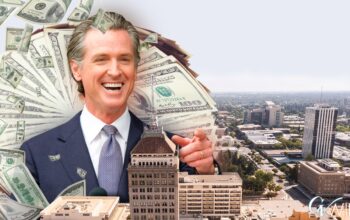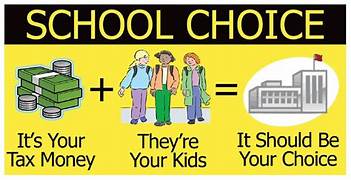The Hollywood Slicky is giving free health care to over two million illegal aliens. This at a cost of $4 billion a year! He wants more money for failed government schools and is still giving hundreds of millions a year to the billionaires in the Hollywood entertainment business. So, while we have a $32 billion deficit and growing, revenues continue to plummet, his friends and supporters are still getting their money (your money).
“The analyst’s estimate of the current shortfall is $6.2 billion more than the administration’s estimate. California currently has $11 billion in one‑time or temporary spending planned for 2023‑2024, and the office recommends reducing that spending now rather than waiting until next year. This approach could prevent disrupting programs during the new fiscal year by withdrawing funds from programs that planned on receiving the money.
Where the May revise runs afoul of the analyst is in the numbers. Newsom’s baseline revenue estimates are lower by $8.4 billion across the three‑year budget window compared to January estimates, but new discretionary spending has gone up to nearly $1 billion.”
Analyst: Revised California budget proposal won’t solve fiscal woes

The nonpartisan legislative analyst says the $11 billion in one‑time or temporary spending planned for 2023‑2024 should be nixed until the Golden State is golden again.
NATALIE HANSON, Courthouse News, 5/16/23 https://www.courthousenews.com/analyst-revised-california-budget-proposal-wont-solve-fiscal-woes/
SACRAMENTO, Calif. (CN) — Governor Gavin Newsom’s revised budget for California, while fixing part of the growing fiscal shortfall, still has a spending problem.
The nonpartisan Legislative Analyst’s Office said in an initial review of the governor’s amended budget proposal that he has solved an estimated $28 billion of a $31.5 shortfall, by shifting more costs and increasing revenues.
But the office said in a forecast Saturday that it anticipates key revenues will remain flat, with weakness shifting from the personal income tax to sales and corporate taxes.
“The administration points out that there is elevated uncertainty in this year’s revenue outlook,” the analyst said. “Based on our assessment, there is a roughly two‑thirds chance revenues will come in below May revision estimates. As such, while we consider the May revision revenues plausible, adopting them would present considerable downside risk.”
The analyst’s estimate of the current shortfall is $6.2 billion more than the administration’s estimate. California currently has $11 billion in one‑time or temporary spending planned for 2023‑2024, and the office recommends reducing that spending now rather than waiting until next year. This approach could prevent disrupting programs during the new fiscal year by withdrawing funds from programs that planned on receiving the money.
Where the May revise runs afoul of the analyst is in the numbers. Newsom’s baseline revenue estimates are lower by $8.4 billion across the three‑year budget window compared to January estimates, but new discretionary spending has gone up to nearly $1 billion.
The analyst said that lawmakers will need to revisit spending augmentations, such as Newsom’s proposal to delay $550 million for broadband last‑mile project grants.
About one‑third, or $4.9 billion, of Newsom’s ideas to bridge the shortfall are reductions. He also wants to make one‑quarter of all spending reductions subject to trigger restoration language. That means that by January 2024, if the administration estimates there are sufficient resources, delayed programs could be restored halfway through the fiscal year.
Newsom’s revision also increased cost shifts by $6 billion. Those include moving $2 billion in loans from special funds to the General Fund, and $1.1 billion in costs for zero‑emission vehicles from the General Fund to the Greenhouse Gas Reduction Fund.
“While swapping bonds for the General Fund is a reasonable response to weakening fiscal conditions, the merits of the individual projects proposed warrant scrutiny, especially given that with higher interest rates, the related debt servicing costs will be higher into the future,” the analyst said.
Newsom also suggests renewing and raising a tax on health insurance plans known as the managed care organization tax. Under the proposal, the tax would last through December 2026 to maintain and augment support for Medi‑Cal. It requires approval from the federal government to be used to draw down federal funding, and could provide $3.5 billion toward the shortfall.
However, Newsom’s proposal does not suggest using any constitutional reserves to address the shortfall, and general purpose reserves would total $26.5 billion by the end of the 2024 fiscal year. The governor proposes using about $2.5 billion in special fund loans and reserve withdrawals to partially support that spending.
But the analyst said that Newsom’s inclusion of $3.1 billion in new, discretionary spending proposals will add to the budget shortfall, and recommended that the Legislature reject all of them without prejudice unless they address an immediate safety or health issue.
Lawmakers should adopt the legislative analyst’s revenue estimates because Newsom’s revenue estimates would see a two‑in‑three chance that the state’s shortfall will grow, according to the report.
“Put another way, adopting the governor’s plan sets the Legislature up for another double‑digit budget problem, involving even more difficult budget decisions, next year,” the analyst said.
“While using some reserves at that time could be reasonable, the Legislature could still face difficult decisions to ensure the budget is on sound fiscal footing in future years.”
The state Senate’s Budget and Fiscal Review subcommittees met Tuesday to discuss the May revision. Lawmakers have until June 15 to sign off on California’s final budget for the coming year.



